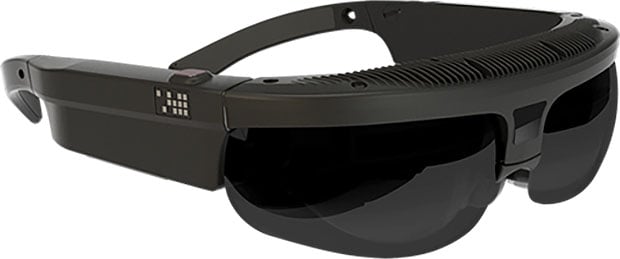Ground Control To Major Tom: NASA Explores Use Of Smart Glasses For Astronauts In Orbit
NASA is teaming up with a San Francisco company called Osterhout Design Group (ODG) to test the feasibility of using smart glasses on space missions. By taking advantage of augmented reality (AR) and virtual reality (VR) technology, astronauts will don computerized glasses built by ODG to making working on space projects a bit easier.
There are several early uses that have already been identified, such as using "Assisted Reality" software to enable line of sight check lists, guided support via telepresence, and the ability to overlay digital markers on machinery or equipment, all while allowing the astronaut to keep his or her eyes and hands focused and free.

"As electronic directions and instructions replace paper checklists and longer duration missions are considered, there is a need for tools that can meet evolving demands," said Lauri Hansen, Engineering Director at NASA Johnson Space Center. "ODG’s technology provides an opportunity to increase space mission efficiencies and we are pleased to explore its potential in human spaceflight while also advancing its use here on earth."
Without the glasses, astronauts rely on printed instruction manuals and index cards bound by metal rings. If something goes wrong, they have to sort through the materials for a fix. It's a comparatively cumbersome approach that many times leads to a phone call to NASA. Smart glasses also present a less bulky solution compared to mounting a laptop to an astronaut's head, which is something NASA tried.
"By the fall, we will have astronaut and crew feedback," Sean Carter, a strategic partnerships manager at NASA's Johnson Space Center in Houston, told Bloomberg. "It's our goal to approach the programs shortly thereafter. I don't know that the crew will let us wait that long."
A 1.5GHz dual-core processor and 1GB of LP-DDR2 RAM power ODG’s R-6 glasses. They also have 16GB of storage, swappable shields, 5MP camera with autofocus, magnetic stereo audio ports with earbuds, Wi-Fi and Bluetooth connectivity, and various sensors. An upgraded R-6S model due out soon will bump up the processor to a Qualcomm Snapdragon 805 2.7GHz quad-core chip, 3GB of RAM, and 64GB of storage, plus faster Wi-Fi and Bluetooth and the addition of a humidity sensor.

